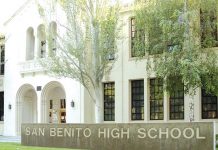Tuesday’s column might have rubbed some people the wrong way,
and by people I mean those from private schools. I can see why.
If coaches and athletes are going to get called out in the paper
for poor performances, I can admit when one of my own articles has
some glaring omissions, and turns out to be a brick.
Tuesday’s column might have rubbed some people the wrong way, and by people I mean those from private schools. I can see why.
If coaches and athletes are going to get called out in the paper for poor performances, I can admit when one of my own articles has some glaring omissions, and turns out to be a brick.
It’s important to note not every athlete from a private school, such as Palma or the West Catholic Athletic League members, is on scholarship, and very few fit the model of the Arthur Agee, “Hoop Dreams” archetype.
One parent of a former private school athlete told me they thought roughly 10 percent of student-athletes were getting financial-aid assistance to attend a private school in San Jose. That parent then added that even if it works out to be a “scholarship,” and there is no way the money would be paid back in full, the school will substitute other requirements to compensate for the cost of tuition. Volunteering for the most mundane of tasks such as operating the snack shack or pitching in with school repair are just a couple examples. If someone in the family has a skill, it will be utilized to repay the debt.
Conversely, public schools have advantages over private schools that several people I spoke with were quick to point out.
Gilroy and San Benito may not be able to recruit kids for a variety of purposes (band, drama, sports, etc.), but when you’re the only show in town, that’s pretty much a recruiting tool in itself. There is no reason to think any school with 2,400-plus enrollments can’t compete with the best in the Bay Area in most sports. Over the past year, I think that has been proven, especially by Gilroy football and wrestling, San Benito girls volleyball and basketball, and an assortment of other teams.
That’s a credit to both school’s strong athletic departments, which starts with the athletic directors (Jack Daley for Gilroy and Tod Thatcher for San Benito) and on down to the dedicated coaches and athletes.
A free education, middle schools that act as feeder programs and a community where just about everyone is familiar with one another is the best situation a public school could ask for when it comes to competing with the private schools, even if kids can’t be recruited.
As one Gilroyan told me, “You got two major grocery stores in town, you got a junior high school that doesn’t have a sports complex so they have to play at the high school – I’m not saying they’re doing anything illegal (recruiting-wise), but everybody is running into everybody.”
So add all this up, and my argument is still the same. An Open Division for all major sports, the ones that actually put fans in the stands, will give us better playoffs and better champions. It will also cut back on the lopsided matchups in early rounds. The private schools will still be there in the end most times because that 10 percent of gifted athletes on scholarship does make a difference. But it doesn’t mean they will always win.
The argument for an Open Division, I believe, should be even greater for the smaller public schools, which assemble championship programs sporadically.
So, I’ve said my piece. Now let us know what you think.
—
Call the Green Phone at (408) 842-9069 or e-mail: gr********@**********rs.com










